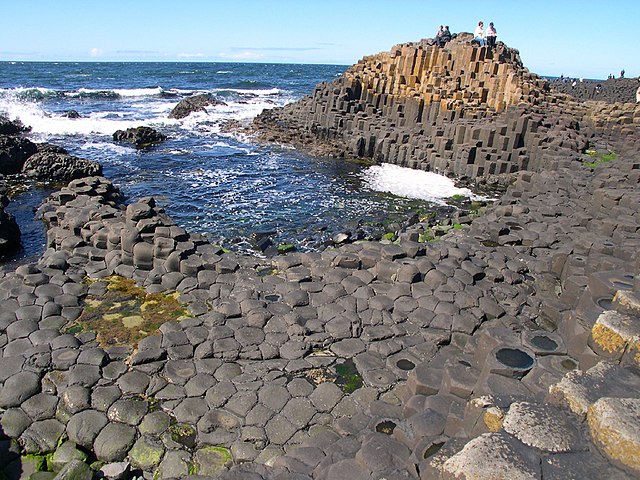Giant's Causeway Facts
Below are some of the facts about Giant's Causeway:
- The Giant’s Causeway is a 50-60 million years old natural rock formation.
- It is believed to be result of volcanic eruption some 50 million years ago. The lava cooled rapidly and contracted creating these columnar structures.
- There are about 40,000 interlocking basalt columns and the shape of most of these are hexagonal. Huge stepping stones are formed by the columns some of which are as high as 39 feet.
- Although most of the columns are hexagonal there are ones that have four, seven or eight sides.
- There are columns that is called as Giant’s eye by the local. These are the round shaped columns, they must have got their shape due to weathering of the rocks.
- The columns are interlocked in such way that it is almost impossible to pass through a knife in between them. When viewed from above they look like a man made street.
- There is a local folklore about the causeway. It says that the magical giant Finn Mc Cool had built this Giant’s Causeway. He did so in order to reach Scotland easily without getting his feet wet.
- In Scotland too there is a similar rock formation at Fingal’s Cave. It is located about 75 miles away from the causeway.
- Due to the rocky coastline around this structure there are many ship wrecks. In 1588 a Spanish ship had sank and more than 1,000 men were killed. Today the rocks is also known as Spaniard Rock. Many divers are seen looking for the hidden treasure in the seas around the Giant’s Causeway.
- Visitors are allowed to the enjoy the beauty of the causeway. They can trek along the columns and enjoy their eternal beauty.
- It is an excellent place for spotting sea birds like the cormorants, razorbills, and petrels.
- It is the most visited tourist spot in Ireland. Recently there is an upsurge in the number of tourist’s visiting this place every year. This place is free to visit for anay traveler.
- Many films have utilized the beauty of the Giant’s Causeway. Games of Thrones is captured in these region of Ireland.
